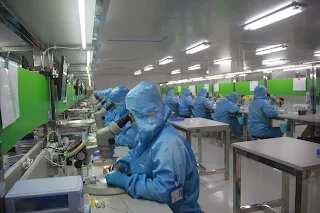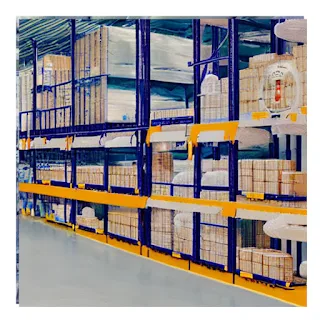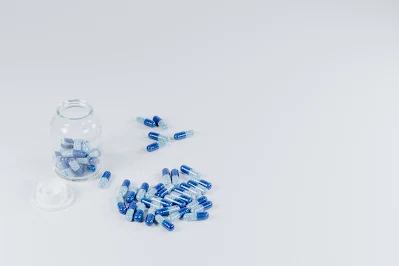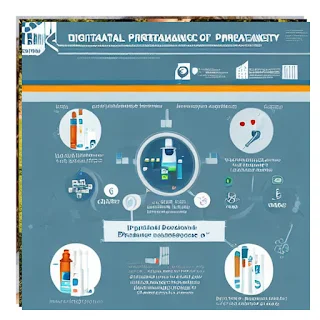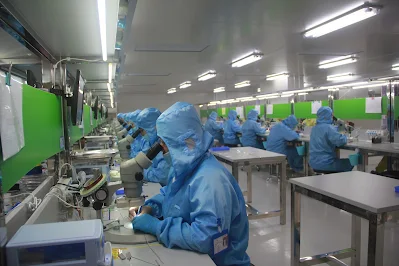The pharmaceutical industry plays a vital role in the healthcare system, developing and producing the medications that are used to treat and prevent a wide range of health conditions. The pharmaceutical supply chain is the network of organizations and processes that are involved in the development, production, distribution, and delivery of medications to patients.
The pharmaceutical supply chain involves a complex network of players, including drug manufacturers, wholesalers, distributors, retail pharmacies, hospitals, and other healthcare facilities. These organizations work together to ensure that medications are developed, produced, and delivered to patients in a timely and efficient manner, while also ensuring their quality, safety, and effectiveness.
In this post, we will explore the pharmaceutical development process and the various players and processes that make up the pharmaceutical supply chain. We will also discuss the challenges and considerations that must be addressed to ensure the safety, quality, and availability of medications to patients. Whether you are a patient, a healthcare professional, or simply interested in learning more about the pharmaceutical industry and supply chain.
Overview of the pharmaceutical development process
The pharmaceutical development process is a complex and time-consuming process that is required to bring a new medication to the market. It involves several stages, including:
Drug discovery and research: The first step in the pharmaceutical development process is to identify and research potential new drugs. This involves studying the mechanisms of diseases and identifying potential targets for treatment, as well as synthesizing and testing new compounds to see if they have the desired therapeutic effect.
Preclinical testing: Once a potential new drug has been identified, it must undergo preclinical testing to determine its safety and effectiveness. This involves testing the drug in a laboratory setting and in animal models to assess its potential benefits and risks.
Clinical trials: If the drug shows promise in preclinical testing, it can move on to clinical trials, which are conducted in humans to further evaluate its safety, effectiveness, and dosage. Clinical trials are conducted in three phases, with each phase involving a larger number of participants and providing more information about the drug.
FDA approval and marketing: If the clinical trials are successful and the drug is deemed safe and effective, it can be submitted for approval to the Food and Drug Administration (FDA). If approved, the drug can be marketed and made available to patients.
The pharmaceutical development process can take many years and involve significant investment, as it requires extensive research, testing, and regulatory review. The process is designed to ensure that new drugs are safe and effective before they are made available to patients.
The pharmaceutical supply chain: Key players and processes
The pharmaceutical supply chain is made up of a complex network of organizations and processes that are involved in the development, production, distribution, and delivery of medications to patients. Some of the key players in the pharmaceutical supply chain include:
Manufacturers: Pharmaceutical manufacturers are responsible for producing and packaging the medications that are used to treat and prevent various health conditions. They may produce medications in bulk at large facilities, or they may produce specialized medications, such as injectables or compounded medications, at smaller facilities.
Wholesalers: Wholesalers are responsible for purchasing medications from manufacturers and distributing them to other members of the supply chain, such as pharmacies and hospitals. They may also provide storage, distribution, and logistics services.
Distributors: Distributors are responsible for distributing medications to retail pharmacies and other healthcare facilities and may also provide storage and logistics services. They may work with wholesalers or directly with manufacturers.
Retail pharmacies: Retail pharmacies are responsible for filling prescriptions for patients and providing them with the medications they need. They may be located in a variety of settings, such as standalone stores, supermarkets, or big box stores.
Hospitals and other healthcare facilities: Hospitals and other healthcare facilities, such as clinics and nursing homes, may have their own pharmacies or may purchase medications from wholesalers or distributors. They are responsible for dispensing medications to patients and may also provide medication management and other pharmacy services.
These organizations work together to ensure that medications are developed, produced, and delivered to patients in a timely and efficient manner, while also ensuring their quality, safety, and effectiveness.
The pharmaceutical supply chain plays a critical role in the development and delivery of medications to patients. It involves a complex network of organizations and processes that work together to ensure that medications are developed, produced, and delivered to patients in a timely and efficient manner, while also ensuring their quality, safety, and effectiveness. However, the pharmaceutical supply chain also faces a number of challenges and considerations, such as ensuring the quality and safety of medications, managing costs and pricing, ensuring access and availability of medications, and ensuring the security and integrity of the supply chain. Addressing these challenges and considerations is essential to ensure the safety, quality, and availability of medications to patients.




